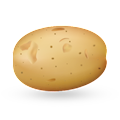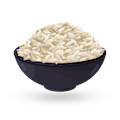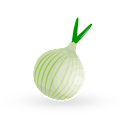Mulligatawny
This classic curry soup originated in the 18th-century British Raj, the colonial regime of India. Mulligatawny takes its name from the Tamil miḷaku-taṇṇīr which literally translates to 'black pepper water.' Originally, the local Madras recipe on which the soup was based included only vegetables, spices, and rice, whereas later British versions added various meats, mostly veal or chicken.
Modern mulligatawny recipes tend to be even more complex, so the soup is now often made with the addition of lentils, apples, coconut milk, and sometimes even lemon juice. Eaten with a large quantity of boiled rice, this substantial meat-based soup becomes a meal in itself and is traditionally enjoyed with a dollop of tangy sour cream.
Recipe variations
Lamb Mulligatawny
READY IN 1h 15minThe following is the recipe for a lamb mulligatawny soup. The lamb is boneless, with fat removed, and cut into cubes, and the soup is very heavily spiced with a plethora of herbs and spices such as ginger, coriander, cumin, turmeric, and cayenne pepper. First, the meat is browned, then removed from the pot, and spices and a ginger-garlic paste are shortly stir-fried just to release the aromas. The meat and its juices are then returned to the pot, and chickpea paste and chicken broth are added. The soup is then brought to a boil and simmered until the meat is tender. Optionally, uncooked rice can be added once the soup is at boiling point. If you cannot find white poppy seeds, it's better to omit them altogether than to substitute them with the black variety.
Vegetable Mulligatawny Soup
READY IN 1h 25minThe following recipe is for a vegetable mulligatawny. The soup consists of heavily spiced root vegetables that are pureed, then creamed at the end by adding coconut milk. If left thick, the soup makes a delicious sauce, typically paired with hard-boiled eggs; while diluted, it's a perfect starter or a light meal served with a side of crusty bread, croutons, or rice.
Mulligatawny Authentic recipe
The following is the recipe for a lamb mulligatawny soup. The lamb is boneless, with fat removed, and cut into cubes, and the soup is very heavily spiced with a plethora of herbs and spices such as ginger, coriander, cumin, turmeric, and cayenne pepper. First, the meat is browned, then removed from the pot, and spices and a ginger-garlic paste are shortly stir-fried just to release the aromas. The meat and its juices are then returned to the pot, and chickpea paste and chicken broth are added.... Read more


























